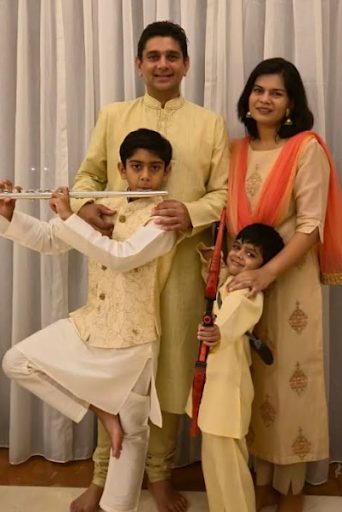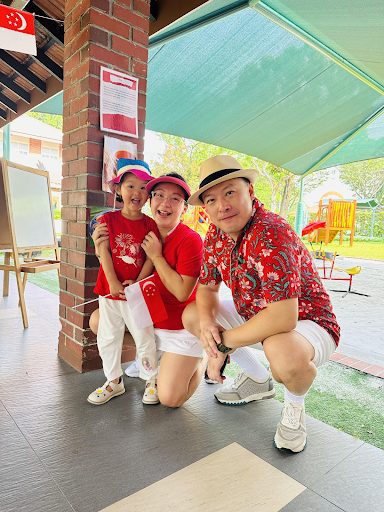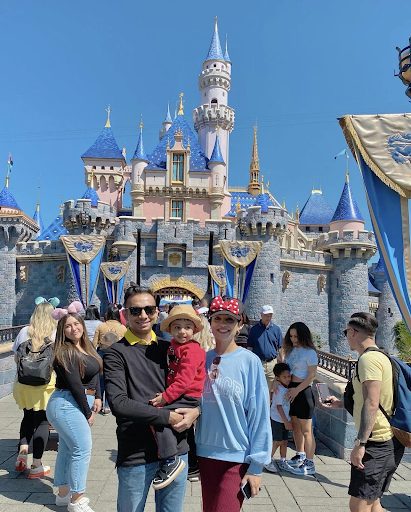Nursery

EtonHouse Inquire · Think · Learn Curriculum Framework :
Pre-Nursery – Nursery 1
The EtonHouse Inquire · Think · Learn learning goals reflect the ‘whole child’; the child as a physical, cognitive, social and emotional being; and support us in our observation and curriculum design process.
The child in a social-cultural context – understanding self and others:
From birth, young children demonstrate an intense interest in their social world. Children learn about themselves firstly within the family context, as they develop an awareness that they are connected to and belong within a family grouping. As children enter the broader context of the early childhood setting, they extend this sense of belonging to peers and other adults, playing beside, listening to and working in co-operation with other people. Children’s interactions with their primary caregivers (parents and others), their peers and community members both support and shape the views they hold about themselves and their relationships with others.
The thinking child – building understanding of the world (critical, creative and logical thinking, mathematical, scientific and technological understanding)
Young children develop familiarity with mathematics, science and technologies through their daily interactions with the world. Rituals, routines and play experiences form an important part of the young child’s ability to develop knowledge and understanding about concepts such as number, shape, estimation, prediction, sequencing, classifying and planning. This learning outcome refers to the many ways in which children engage with objects and materials to make sense of their experience. Children demonstrate meaning-making through:
- Critical and creative thinking
- Problem-solving
- Questioning and theory building
- Reflections
This learning outcome also explores specific content knowledge related to mathematical, scientific and technological awareness:
- Developing understanding about numbers, rational counting and number symbols
- Planning, designing and constructing simple models
The child as a communicator – speech and language, including multiple literacies and the symbolic languages):
The infant skilfully communicates their desires, for example, the need to be fed, changed and comforted. From these early beginnings and ongoing interaction with others, children develop a repertoire of verbal and non-verbal communication strategies. It is through the reciprocity of communication where one party communicates and the other responds that children learn ‘language’ and communication.
As children develop their interest to share their ideas more formally, they become aware that ‘speech’ can be written down in the form of symbols which transit into letters, establishing the pathway to literacy learning. When children share their ideas, thoughts and feelings, they communicate in multiple ways and languages, using their bodies (dance, drama, movement and mime) as well as visual and graphic forms of expression (painting, drawing, modelling with clay, constructing with recyclable materials). Symbolic or pretend play is also a mode of communication, whereby children communicate their understandings about their world and the people in it.

The physical child – building health, safety and physical understandings:
Young children enter our setting with an existing awareness and understanding of their own bodies and an established range of self-help skills and physical competencies. As children actively explore their world, they are supported in developing a positive attitude to appropriate health, nutrition and hygiene practices, as well as developing increasing control over their bodies. This learning outcome also supports children’s understandings of personal safety.
The child as an agent of change
Today’s children live in a time where the future of our planet and the sustainability of the world’s resources depend on our ability to better care for our environment. This learning outcome refers to the development of understandings and dispositions which relate to conservation and recycling, as well as an appreciation of living and non-living things, habitats, weather and seasonal change.
Bridging connections with the IB Primary Years Programme (PYP)
In conjunction with the developmental framework that the EtonHouse Inquire.Think.Learn. curriculum framework provides, our Pre-Nursery and Nursery 1 classes take inspiration from the IB Primary Years Programme, and the transdisciplinary approach to learning. Using the big ideas around the transdisciplinary themes such as Who We Are, How We Express Ourselves and How the World Works, the Pre-Nursery and N1 classes explore units of inquiry related to these ideas over the course of their year, with a specific focus that stems from and follows the interests of the children. As children move from their Pre-Nursery and Nursery 1 classes into Nursery 2, and the formal start of our PYP Programme, they are readily familiar with the style of inquiry learning through play. The connections made to the curriculum are developed through planned experiences and invitations to learn, where children have the flexibility to explore and inquire in directions that interest them.
Our Programme of Inquiry: Nursery 1
Please note, this programme of inquiry is subject to change as teachers reflect and develop the curriculum throughout the year.


Arpit Marthur, Parent of Ameya, Nature Pre-School
We saw a very nurturing and thriving environment being offered by the teachers and other staff members. The teaching styles are tailored to cater for each child’s needs. Ameya is always happy going to school and surprises us with his learnings. Read more here


Wei Fang Lin, Parent of Joey, Nature Pre-School
We are very glad to see Joey’s new development in:
- Willing to share what she sees and what she hears everyday;
- Speaking English and Mandarin with different people effortlessly;
- Be willing to try new things and sports activities (such as walking to the subway station, riding a bicycle, etc.).


Prakash Maheswari, Parent of Kabir, Nature Pre-School
Moving countries was a big change for our son, but the environment was so welcoming and the teachers and staff so friendly and loving, that he settled in very well, very soon. It is a great campus with tons of outdoor experiences and ample space for independent inquiry and thinking. Kabir looks forward to coming to school everyday. Read more here

